Styplon Bolus for Horses: Ayurvedic Veterinary Medicine for Hemorrhage Management
Bleeding disorders in horses—whether due to trauma, surgery, internal illness, or reproductive complications—pose serious threats to equine health. In such cases, veterinarians seek a solution that not only stops bleeding but also supports vascular integrity and promotes faster healing.
Styplon Bolus, a herbal veterinary formulation, has emerged as a trusted hemostatic agent for horses. Known for its natural anti-hemorrhagic and wound-healing properties, it helps control internal and external bleeding, minimizes post-surgical complications, and supports equine recovery with minimal side effects.
What is Styplon Bolus?
Styplon Bolus is a herbal veterinary medicine formulated to control and manage bleeding (hemorrhage) in animals, especially horses. It is composed of a synergistic blend of natural plant extracts and minerals that promote hemostasis (stopping of bleeding), strengthen blood vessels, and support faster wound healing.
It is widely used by veterinarians for:
- Internal and external bleeding
- Post-surgical recovery
- Epistaxis (nosebleeds)
- Hematuria (blood in urine)
- Postpartum uterine bleeding
- Traumatic injuries or wounds
Common Ingredients (Herbal Composition)
| Herbal Ingredient | Action |
| Lodhra (Symplocos racemosa) | Astringent, helps clot blood and reduce inflammation |
| Amla (Emblica officinalis) | Rich in Vitamin C, promotes capillary strength |
| Arjuna (Terminalia arjuna) | Cardiovascular support, vessel tone and repair |
| Coral calcium (Pravala pishti) | Promotes natural blood clotting |
| Sarsaparilla (Hemidesmus indicus) | Detoxifies blood, supports immunity |
Indications of Styplon Bolus in Horses
1. Traumatic Injuries
- Cuts, lacerations, or wounds from accidents
- Bleeding due to kicks, bites, or fences
- Hoof punctures or abscess rupture
2. Surgical Support
- Post-operative bleeding control
- Use after castration, dental extractions, or abscess drainage
- Reduces hemorrhagic risk and recovery time
3. Reproductive Hemorrhage
- Postpartum bleeding in mares
- Retained placenta-related bleeding
- Uterine vascular fragility after foaling
4. Epistaxis (Nosebleeds)
- Common in racehorses due to capillary rupture
- Helps restore capillary strength and reduce recurrence
5. Hematuria (Blood in Urine)
- Urinary tract infections or trauma
- Kidney-related bleeding
- Co-treatment with antibiotics and diuretics
6. Internal Hemorrhage (Supportive Use)
- After internal trauma or parasitic damage
- Liver or spleen congestion with bleeding symptoms
7. General Vascular Weakness
- Capillary fragility
- Vitamin C or mineral deficiencies
- Post-infection vascular recovery
Mechanism of Action
Styplon Bolus works through multiple herbal pathways:
1. Promotes Clot Formation
- Minerals like calcium from Red Coral support the natural blood clotting cascade.
2. Vasoconstriction and Capillary Sealing
- Herbal ingredients like Lodhra and Arjuna promote vasoconstriction and help reinforce leaky capillaries.
3. Tissue Repair and Healing
- Amla and Arjuna support the regeneration of damaged tissues and possess anti-inflammatory properties.
4. Antioxidant and Immune Modulation
- Boosts natural defense mechanisms to prevent secondary infections.
Result: Rapid bleeding control, reduced swelling, and faster healing without chemical burden.
Recommended Dosage and Method of Administration of Styplon Bolus for Horses
Styplon Bolus is an oral herbal formulation used to control bleeding and promote vascular stability in horses.
General Recommended Dosage
| Condition | Dosage | Frequency | Duration |
| Minor bleeding / mild epistaxis | 1 bolus | Once daily | 3–5 days |
| Moderate bleeding or post-surgery | 1 bolus | Twice daily | 5–7 days |
| Postpartum bleeding in mares | 2 boluses | Once daily | 3–5 days |
| Severe trauma or hemorrhage | 2 boluses | Twice daily | 5–7 days (under vet guidance) |
| Supportive therapy in hematuria | 1 bolus | Once daily | 5–7 days |
Note: Dosage is based on the average adult horse weight (~400–600 kg). Adjust accordingly for ponies or large draft breeds.
Method of Administration
- Route: Oral
- Form: Large herbal bolus (can be crushed and mixed with feed or water)
- Preferred Timing: After feeding to reduce the risk of gastric irritation
- Taste Tip: Mask bitter taste with molasses, jaggery, or soaked bran mash if the horse resists direct administration.
Administration Guidelines
- Provide access to clean drinking water at all times.
- Do not administer to a horse lying down or in respiratory distress.
- For foals or smaller horses, consult a veterinarian for dose adjustment.
Veterinary Monitoring
- In cases of severe bleeding, use Styplon Bolus as an adjunct, not a replacement for emergency care.
- Monitor clinical signs: bleeding volume, mucous membrane color, heart rate, and recovery behavior.
- Combine with antibiotics, uterotonics, or anti-inflammatories when indicated, under supervision.
Usage Warnings, Safety Guidelines, and Possible Reactions of Styplon Bolus in Horses
Styplon Bolus is a herbal veterinary formulation widely regarded as safe for horses when used as directed. It contains plant-derived ingredients and natural minerals traditionally used in Ayurvedic medicine to control bleeding, reduce inflammation, and enhance vascular integrity.
However, as with any supplement or therapeutic agent, responsible usage, proper administration, and awareness of potential risks are essential for ensuring safety and effectiveness.
Safety Profile
- Non-toxic and herbal: Styplon is free from synthetic chemicals, steroids, and artificial hemostatic agents.
- No known drug residues: Safe for use in horses that may enter the food chain or compete in equestrian sports (subject to local regulations).
- Suitable for long-term use in chronic vascular conditions or post-operative recovery under veterinary guidance.
Precautions
To ensure optimal safety, consider the following precautions:
- Veterinary Diagnosis is Essential
- Do not self-medicate without consulting a veterinarian.
- Bleeding could indicate a serious underlying condition (e.g., tumors, ulcers, systemic infection).
- Use Correct Dosage
- Follow the manufacturer’s or veterinarian’s recommended dose.
- Adjust dosage for body weight, age, or existing health conditions.
- Avoid Use in Allergic Individuals
- Although rare, hypersensitivity to herbal components may occur.
- Watch for signs like swelling, itching, or respiratory difficulty.
- Monitor for Interactions
- Caution when used alongside anticoagulants or other blood-modifying agents.
- Avoid combining with unknown herbal or synthetic medications without veterinary clearance.
- Pregnancy and Lactation
- While generally considered safe, pregnant or lactating mares should be treated under close supervision to avoid uterine stimulation.
Contraindications
- Known allergy or sensitivity to any component of the formulation
- Horses with diagnosed bleeding disorders requiring intensive medical intervention
- Concurrent use with strong blood thinners or anticoagulant therapy without supervision
Possible Side Effects
While rare, the following mild side effects may be observed:
| Side Effect | Likelihood | Description |
| Temporary feed refusal | Low | Due to taste or bitterness of herbal ingredients |
| Mild GI upset | Very low | May occur if given on an empty stomach |
| Drowsiness or lethargy | Extremely rare | May reflect calming action of certain herbs |
| Allergic reaction | Rare | Swelling or hives in sensitive individuals |
No cases of toxicity or organ damage have been reported when used correctly in horses.
Signs to Discontinue and Seek Vet Help
- Increased or continued bleeding
- Colic symptoms or severe diarrhea
- Lethargy, weakness, or collapse
- Swelling of the mouth, lips, or face
Clinical Insights and Therapeutic Use of Styplon Bolus for Horses
Though Styplon Bolus is rooted in traditional Ayurvedic medicine, its use in veterinary care—especially in equines—has gained significant attention due to its safe herbal formulation and observable therapeutic results. While formal large-scale clinical trials in horses are limited, field studies, case reports, and historical evidence support its efficacy in controlling hemorrhagic conditions.
1. Ethnoveterinary and Ayurvedic Foundation
Styplon Bolus contains ingredients like Lodhra, Arjuna, Amla, and Pravala Pishti, which have been described for centuries in classical Ayurvedic texts for their:
- Hemostatic (blood-clotting) properties
- Anti-inflammatory and astringent effects
- Capillary and vascular strengthening abilities
These herbs have been scientifically validated for their biological activities in multiple in vitro and animal model studies, demonstrating efficacy in wound healing, blood coagulation, and tissue repair.
2. Observational Use in Equine Practice
Veterinarians in India and other countries where Ayurvedic veterinary care is common report frequent use of Styplon Bolus in:
- Post-surgical recovery (e.g., after castration or dental procedures)
- Postpartum bleeding in mares
- Nosebleeds (epistaxis) in racehorses
- Trauma and wound management in field cases
Field observations note that horses treated with Styplon Bolus exhibit faster bleeding control, reduced swelling, and better post-injury recovery, especially when used in combination with antibiotics or anti-inflammatories.
3. Ingredient-Based Scientific Evidence
Several individual components of Styplon Bolus have been studied for their medicinal properties:
- Lodhra (Symplocos racemosa): Demonstrated significant anti-inflammatory and bleeding control effects in animal models.
- Arjuna (Terminalia arjuna): Widely researched for cardiovascular and wound-healing properties.
These studies validate the mechanistic basis for the clinical effects seen in horses administered Styplon Bolus.
4. Veterinary Practitioner Testimonials
Veterinarians have reported:
- Reduced bleeding time post-surgery
- Improved healing in hoof injuries and lacerations
- Safer outcomes during foaling complications
- Positive responses with minimal side effects
In anecdotal reports, Styplon Bolus is often chosen when conventional synthetic hemostatics are either unavailable, contraindicated, or undesirable due to concerns over drug residues in performance animals.
5. Need for Formal Equine Trials
While the results from field use and traditional knowledge are promising, there is a clear need for structured clinical trials in equines to:
- Quantify its hemostatic effects
- Establish standardized dosing protocols for various conditions
- Confirm safety in long-term or preventive use
Such studies would not only broaden its veterinary acceptance but also help integrate herbal formulations into mainstream equine therapeutics globally.
Benefits of Using Styplon Bolus in Horses
| Benefit | Details |
| Natural bleeding control | Stops bleeding without synthetic chemicals |
| Vascular support | Strengthens blood vessels and reduces recurrence |
| Post-surgical healing | Minimizes complications and recovery time |
| Safe for long-term use | No toxicity or chemical residue |
| Cost-effective | Affordable alternative to synthetic drugs |
| Easy administration | Orally administered with feed or water |
Conclusion
Styplon Bolus for Horses stands as a powerful yet gentle herbal alternative for controlling bleeding, healing wounds, and supporting vascular integrity in various equine conditions. With roots in Ayurveda and proven field efficacy, it offers veterinarians and horse owners a safe, cost-effective, and side-effect-free option for managing trauma, surgical recovery, reproductive bleeding, and internal hemorrhagic disorders.Whether you’re managing a performance horse, a breeding mare, or a working draft animal, Styplon Bolus adds a reliable, natural remedy to your equine health toolkit—promoting faster recovery, safer interventions, and improved outcomes.







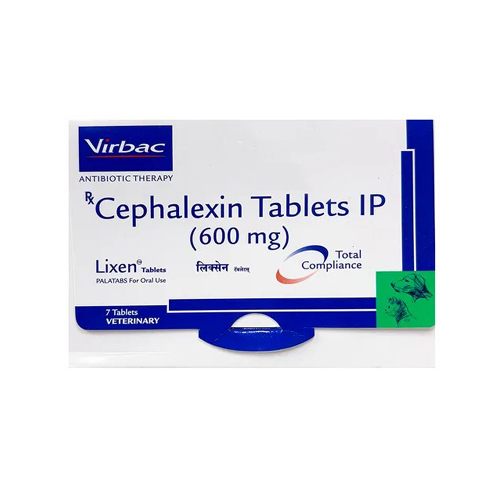
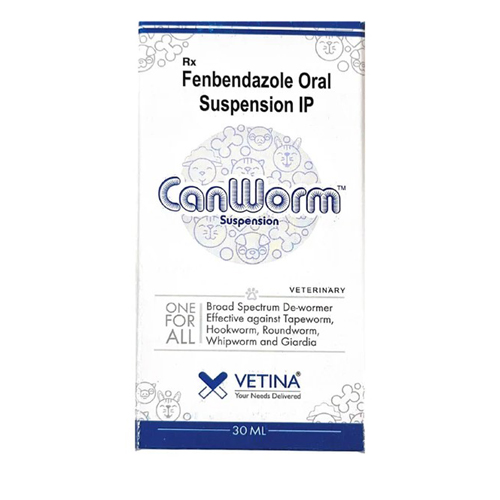



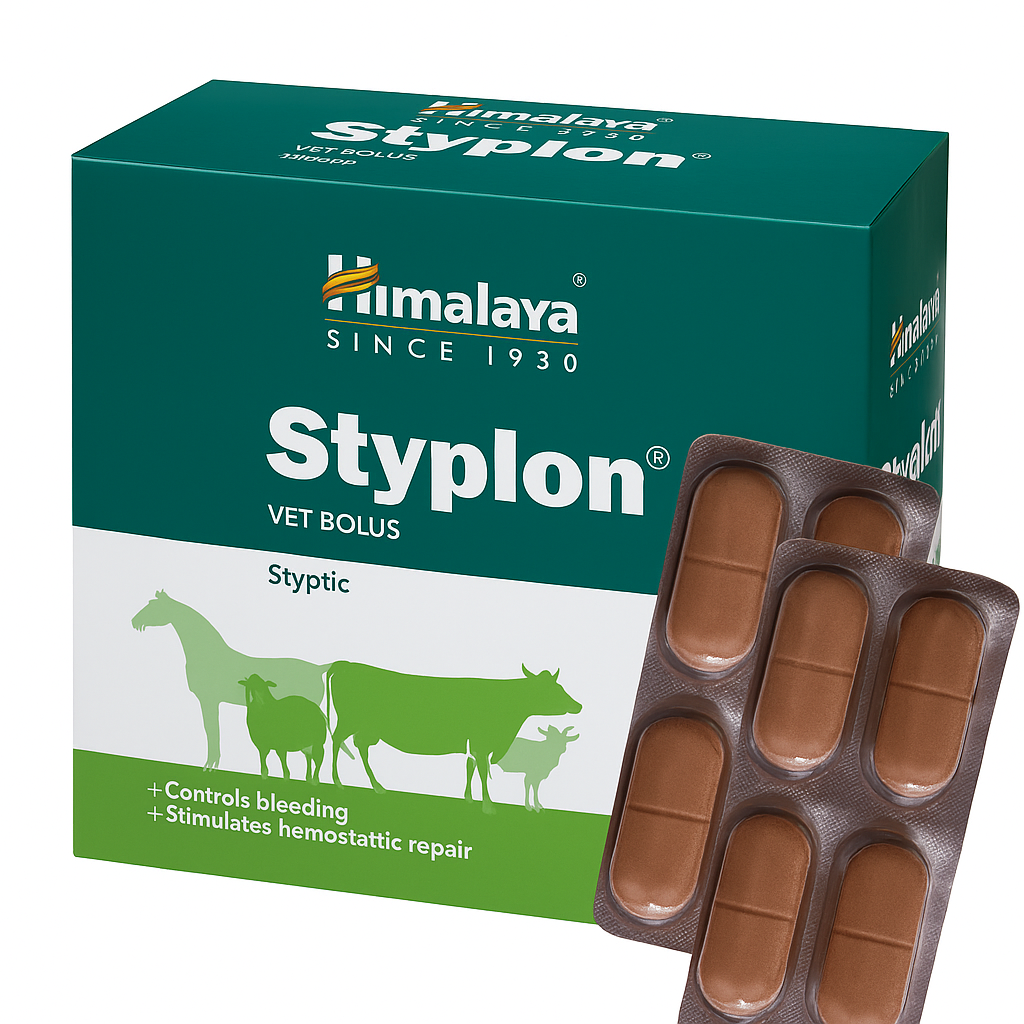
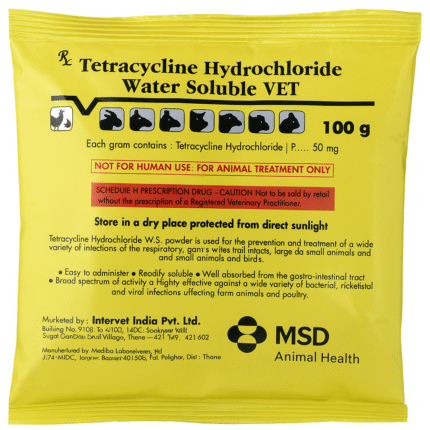
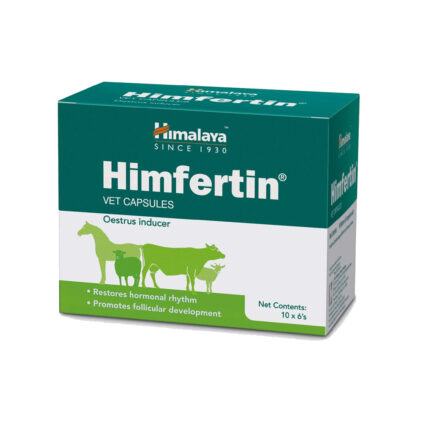
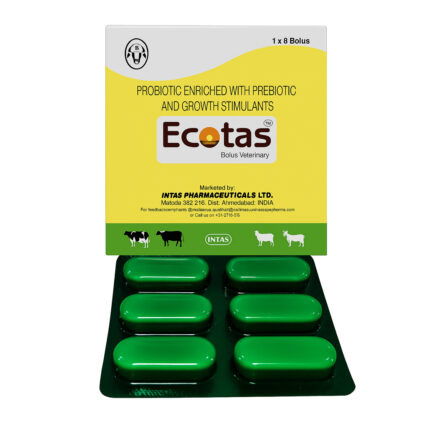
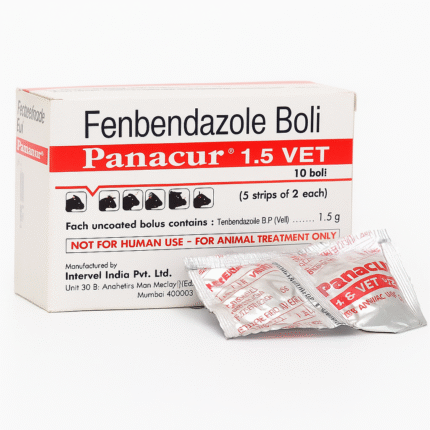
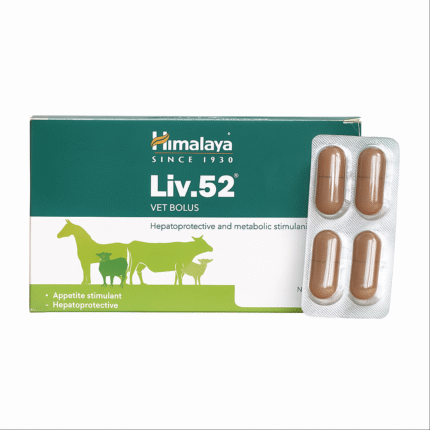
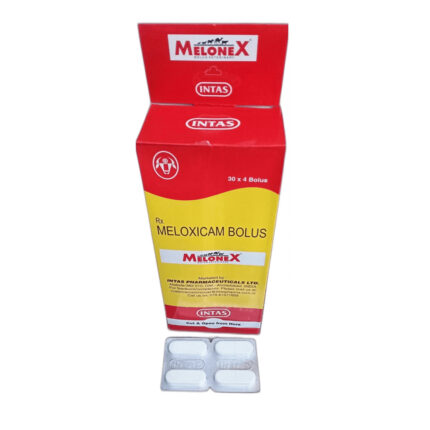
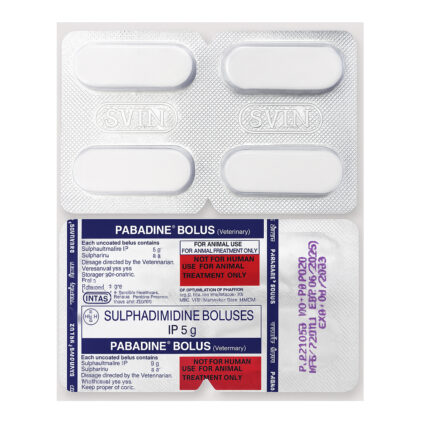
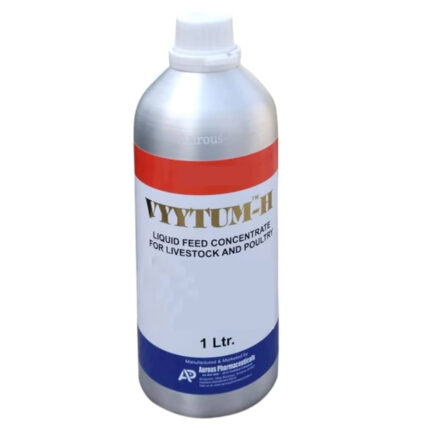

Reviews
There are no reviews yet.